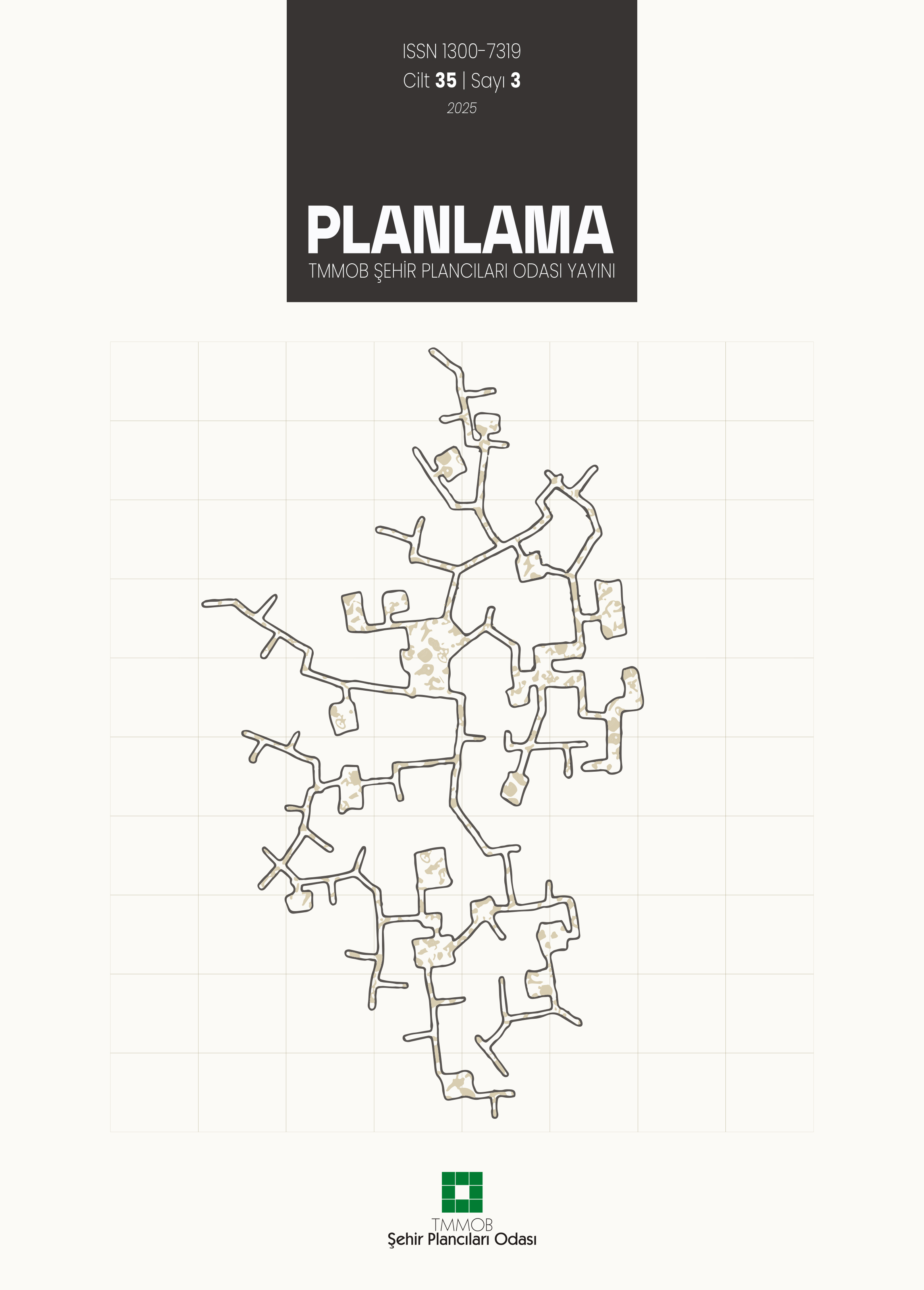A Research on the Relationship Between Functional Transformation in Spaces and Gentrification, Nevşehir Uçhisar
Tuğçe Utku SümerDepartment of Architecture, Atılım University Faculty of Fine Arts, Desing and Architecture, Ankara, TurkeyThe concept of gentrification, which was widely discussed around the world in the 1960s, concerns the complex phenomenon of physical and social mobility. Since its emergence, numerous definitions have been proposed, although they are largely based on the manner in which it was initially conceptualised. Although many definitions place an emphasis on the social consequences of gentrification, this broad perspective often fails to take into account the contextual diversity and specific characteristics of gentrification in various cities. This study aims to demonstrate that gentrification is linked to spatial and physical transformations, which are shaped by spatial dynamics that can either impede or accelerate the process. The Uçhisar town of Nevşehir was selected as the study area due to its transformation driven by tourism and its historical architecture. The influx of tourists has resulted in the conversion of numerous rock-carved houses into accommodation facilities. The research entailed an examination of these transformations and the conduct of interviews with architects and operators engaged in the renovation processes. The objective was to assess the impact of alterations to the built environment on gentrification, the influence of gentrification on that environment, and the potential emergence of a new architectural language. Furthermore,there is a cyclical relationship between spatial transformation and gentrification, either triggering or inhibiting it during the transformation process. This demonstrates that the concept has spatial parameters, moving beyond its traditional definition as a social problem. Furthermore, it highlights that the concept is not solely a sociological phenomenon.
Keywords: Adaptive reuse, gentrification, tourism gentrification, Uçhisar.
Mekanlarda İşlev Dönüşümü ve Soylulaştırma İlişkisi Üzerine Bir Araştırma, Nevşehir Uçhisar
Tuğçe Utku SümerMimarlık Bölümü, Atılım Üniversitesi Güzel Sanatlar, Tasarım ve Mimarlık Fakültesi, AnkaraDünyada 1960larda tartışılan soylulaştırma, fiziksel ve toplumsal hareketliliği içeren kaotik bir durumdur. Ortaya çıkışından günümüze, ilk söylendiği şekliyle temel alınsa da farklı birçok tanımı yapılmıştır. Tanımların çoğunda da toplumsal sonucuna odaklanıldığı ve bir soylulaştırma genellemesi yapıldığı görülmüştür. Ancak bu tür bir soylulaştırma anlayışının, farklı kentlerde görülen soylulaştırmanın bağlamsal çeşitliliğini, özelliklerini ve/veya varsa sınırlarını bulma sürecini gölgelemekte olduğu görülmüştür. Bu nedenle çalışma soylulaştırmanın, özellikle mekanla ve fiziksel dönüşümle ilişkili olduğunu, buna bağlı olarak mekansal dinamiklerle direnç gösteren ya da tetiklenebilen bir kavram olduğunu göstermeyi hedeflemektedir. Bunu yaparken örneklem alanı olarak turizmin aktif bir role dönüşmesi ile tarihi yapı stoğunun dönüşümüne şahitlik eden ve soylulaştırma ile temas halinde olan Nevşehirin Uçhisar beldesi seçilmiştir. Turizmin bölgeye hâkim olması ile pek çok kayadan oyma konut, konaklama yapısına dönüştürülmeye başlanmıştır. Çalışma kapsamında bu mekânlar incelenmiş ve tasarım süreçlerine dâhil olan mimar ve işletmecileriyle yenilenme sürecine dair görüşmeler yapılmıştır. Yapılı çevredeki değişimlerin soylulaştırmayı nasıl etkilediği, soylulaştırmanın yapılı çevreyi nasıl etkilediği ve yeni bir mimari dil yaratıp yaratmadığı sorularına cevap aranmıştır. Analizler sonucunda mekânsal dönüşümle soylulaştırma arasında bir döngü olduğu, dönüşüm sürecinde mekâna dair dinamiklerin soylulaşma üzerinde tetikleyici ve engelleyici etkisi olduğu saptanmıştır. Burada kavramı yalnızca toplumsal bir sorun olmaktan çıkararak mekânsal parametrelere sahip olduğu görülmüş ve kavramın yalnızca sosyolojik bir kavram olmadığı saptanmıştır.
Anahtar Kelimeler: Yeniden kullanım, soylulaştırma, turizm soylulaştırması; Uçhisar.
Manuscript Language: English













